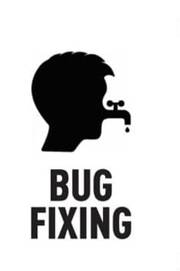
BUG FIXING
Posted 28 Dec 2021 | Source: THE WEEK
Microbes are omnipresent and cause infection of kids. But our body is equipped to fight most of them and, when it cannot, medical science steps in and helps, A look at the many infections around us and how we fight them.
Reenu Jennifer had a bad cold recently, “ I had symptoms like sore throat, headache and stuffy nose, which made it hard for me to breathe, “ recalls Jennifer a teacher at St Joseph’s Boys High school, Bengaluru, She was unable to do her daily chores and was grumpy and cranky. “Due to the current pandemic situation I choose to work from home until I recovered, I didn’t want to expose others around me to the infection,” she says.
Homebound, Jennifer kept gargling and taking steam inhalation. She also tried home remedies like honey ginger tea, which helped case her symptoms.
Jennifer wonders why medical science is still not able to find a cure for common cold, the most common infectious disease among humans, Dr Swati Rajagopal, consultant, infectious diseases and travel medicine, Aster CMI Hospital, Bengaluru, has the answer “Since common cold are caused by rhinoviruses, the challenge is number of circulating strains of types of the virus, There are at least 160 acro types or strains of the virus, so unfortunately we do not have one master key to cure virus, It is virtually impossible to create one vaccine or one drug against the 160 types.”
In the future, we can successfully evolve method of targeting the immune response against the structure common to all subtypes, says Rajagopal .”That is when we can offer protection against all the subtypes, “ she says.
Infections have marched in lockstep with us in our race to modernity, The world is still reeling under a pandemic, and Omicron, the new Covid-19 variant, has cast a dark shadow on our hopes of returning to a normal life. “The vaccine is short-lived. The anti-bodies and protection do not last long and hence you have to keep taking the vaccine, Also infections with the virus causes long-term problem in 40 percent of those who got even a mild infection, We are going to live with this for a long time,“ says a top Emory virologist, “The current viruses are not vaccine-escape mutants. They are coming, I hope I am wrong.”
India has a disproportionately high burden of infectious diseases, Common infections include upper respiratory infections, influenza, diarrhea, pneumonia, urinary tract infections, worm infestations, infections affecting the skin and soft tissues like boils and absences, tuberculosis, dengue, malaria, chikungunya, typhoid fever and HIV/AIDS, It is estimated that drug-resistant infections will result in 10 million deaths a year worldwide by 2050, a significant portion of which will occur in India, Drug-resistant tuberculosis has already been a major public health concern in the country, despite the government’s efforts to eradicate TB by 2025.
Veteran virologist Dr Jacob John is appalled with the way india deals with it’s infectious diseases. “Take, for instance, TB How many people have TB in the country? WHO tells us the numbers, if you ask any doctor he will say the numbers given by WHO are an underestimation, We don’t have a policy to control cholera or typhoid fever. India is home to infectious diseases and yet we don’t have a policy,” he says. “We are very tolerant. We tolerate filth, plastic, bacteria, viruses and diseases.”
In the west, if a person is infected.
